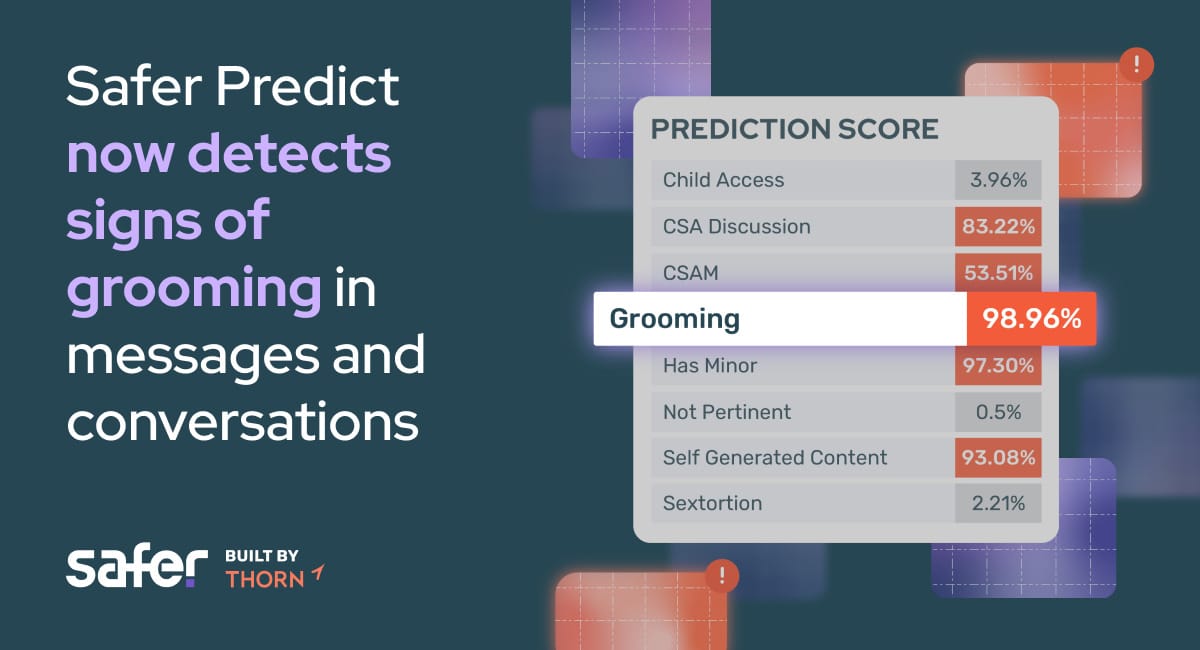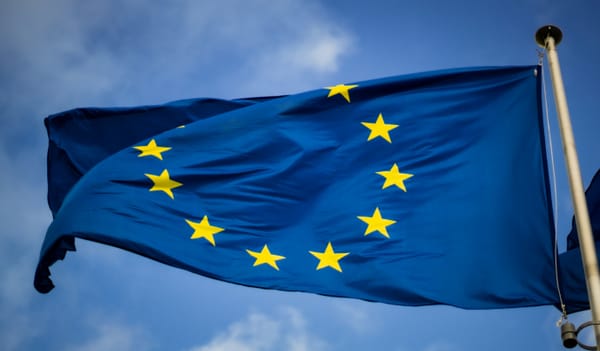The simple test that blew up the FTC's case against Meta
How one experiment defined the social networking market better than the government did. PLUS: Gemini 3 arrives

On Tuesday, a federal judge ruled that Meta’s acquisitions of Instagram and WhatsApp did not create an illegal monopoly. The reasons why were clear even before the Federal Trade Commission filed its case. But a single experiment conducted by the company wound up persuading a judge that the FTC has been attempting to protect a market that doesn’t exist — and now the government’s most serious effort to regulate Meta appears to have collapsed.
It is an outcome that many of us have long predicted. The FTC’s case rested on the idea that Meta competed in a market called “personal social networking,” which comprised just four apps: Facebook, Instagram, Snap, and MeWe. The government sought to distinguish these apps, which it said were used primarily by people who wish to interact with friends and family members, over more general-purpose entertainment apps such as YouTube and TikTok.
In December 2020, when the FTC filed its case, I predicted that the government would lose due to its shoddy market definition. At that time, TikTok already had 800 million users, and the entire consumer internet was remaking itself around the company’s innovations. Citing internal company documents that Platformer had obtained, I noted that after TikTok was banned in India, Instagram use surged — clear evidence that the companies were and remain close rivals.
A year later, US District Court Judge James E. Boasberg dismissed the FTC’s lawsuit for failing to provide sufficient evidence to back up its assertion that Meta held a monopoly in personal social networking. But he let the FTC try again, and allowed the case to move forward in 2022. Even then, he warned the FTC that it was on shaky ground. (“Although the agency may well face a tall task down the road in proving its allegations, the court believes that it has now cleared the pleading bar and may proceed to discovery,” Boasberg wrote at the time.)
The trial finally began this April. From the start, the government struggled to get Meta executives to offer evidence that would bolster their case. When the government pressed CEO Mark Zuckerberg on the idea that Meta’s core value proposition is to connect friends and family, Zuckerberg pointed out — accurately — that over the past few years usage has gradually shifted to watching Reels and other content made by creators.
In the end, it was a simple experiment that undid the FTC’s case. To determine whether Meta held a monopoly, Meta hired an expert to pay people to stop using its products — and then to observe where they went to fill the time.
John List, a professor at the University of Chicago, recruited 6,000 participants for a study. With permission, he installed tracking software on their phones. And then he made them an offer: for every hour that the participant did not use Facebook or Instagram, he would pay them $4. (Participants only had to give up one app; the Facebook holdout group was allowed to use Instagram and vice versa.)
Most participants were happy to stop using Meta products for a few dollars; their usage fell by about two-thirds. More important, though, is what they did on their phones without Facebook or Instagram. And it wasn’t using MeWe.
As a person with a smartphone, you can probably even guess where participants went. The No. 1 destination for those shut out of Facebook and Instagram was YouTube. The No. 2 destination was whichever Meta app they weren’t being paid to avoid — either Facebook or Instagram. No. 3 was TikTok.
Before the substitution study had begun, List measured how much time people spent on Facebook and Instagram normally. This let him control for the possibility that a person shut out of Instagram was simply browsing YouTube or TikTok as they normally would, and not substituting the time that they typically spend on Meta products.
Controlling for that variable, List found that people paid to stay off Facebook substituted Instagram more than any other app, followed by TikTok, YouTube, and Snap. People paid to stay off Instagram substituted TikTok more than any other app, followed by YouTube, Facebook, and Snapchat.
No other app meaningfully substituted for Instagram or Facebook, List found. That includes WhatsApp, which is one of the two acquisitions in question in the case and which barely registered in the analysis.
Boasberg found the study compelling.
“This experiment, which in the Court’s judgment offers the single best evidence of what consumers consider alternatives to Meta’s apps, tells a clear and consistent story,” he wrote. “When using Facebook and Instagram becomes more costly, users turn to TikTok, YouTube, and Snapchat, with no other app notably standing out.”
Boasberg did not rely on List’s study alone to make his ruling. The judge noted that other, more natural experiments also lend credence to List’s findings. An outage of Meta apps in October 2021 led to a surge in usage for TikTok and YouTube, according to the company’s analysis. (“Snapchat — which the FTC insists is Meta’s closest competitor — fell far below, seeing its usage increase by less than a third of what TikTok enjoyed and less than half of what YouTube did,” Boasberg noted.)
And the ruling also cites the same India case study that I did five years ago: once TikTok was banned there in 2020, usage of both Facebook and Instagram surged.
For a judge who reportedly has never used a Meta product, Boasberg’s analysis of consumer internet products was admirably clear-eyed (and much more up-to-date than the FTC’s). He observed, accurately, that the friends-and-family era of the “social graph” is over, having been replaced with what Meta grimly calls “unconnected content” — posts from accounts that you may or may not follow, and have been chosen for you by a recommendation algorithm.
Boasberg notes that this is a natural byproduct of people choosing to share fewer posts of their own, forcing companies like Meta to find alternatives. The social graph no longer has the power it once did. “Longtime users’ friend lists have … become an often-outdated archive of people they once knew,” Boasberg writes. “A casual friend from college, a long-ago friend from summer camp, some guy they met at a party once. Posts from friends have therefore grown less interesting.”
The FTC had tried to argue that even if Meta added video features like Reels, it fundamentally remained a "social networking" app. If a grocery store starts selling pet food, the agency argued, it doesn't suddenly become a competitor to Petco; it’s still a supermarket.
Boasberg didn’t buy it. Dismissing the agency’s "pet food" analogy, he noted that consumers were already treating TikTok as a replacement "not just for unconnected video but for the friends' posts on Facebook and Instagram that the FTC claims have no substitute."
Ultimately, the FTC failed because it tried to draw static lines around products that — for better and often for worse — have continuously evolved. "Like Heraclitus's river," Boasberg wrote in his introduction, "the rapids of social media rush along so fast that the Court has never even stepped into the same case twice."
He noted that when the court first looked at this case, the opinions "did not even mention the word 'TikTok.'" On Tuesday, TikTok more or less decided the case.
The FTC told the New York Times that it is disappointed in the ruling and is considering its options. (A spokesman also baselessly accused Boasberg of anti-Trump bias, after Boasberg had the temerity in April to demand that the administration follow due process after it was caught illegally deporting people.)
Meta, for its part, told me this: “The Court’s decision today recognizes that Meta faces fierce competition. Our products are beneficial for people and businesses and exemplify American innovation and economic growth. We look forward to continuing to partner with the Administration and to invest in America."
For all its obvious failings, the FTC’s case against Meta did have one salutary effect. For the past five years, Meta has struggled to acquire any other company in its space. (Its one significant effort in that vein — a move to acquire the VR company Within — resulted in a bruising antitrust battle with the FTC. Meta won that one eventually, but largely shied away from other big acquisitions.)
And what happened during that time? Competition! ChatGPT launched in 2022 and turned OpenAI into a juggernaut. Meta’s own AI efforts stalled out, requiring a complete overhaul that is costing the company billions of dollars and has so far borne little fruit.
There was a time following Meta’s acquisition of Instagram that the market for consumer apps truly did feel stagnant. The moment didn’t last for long, though. Meta remains a $1.51 trillion company and a formidable adversary. But if the US government wants to check its power, it will have to try something else.

Sponsored

New Grooming detection added! Safer by Thorn is a purpose-built child sexual abuse material (CSAM) and exploitation (CSE) solution powered by trusted data and Thorn’s issue expertise.
The Safer Predict text classification model now detects messages and conversations that contain signs of suspected grooming. When indicators of sexual exploitation or abuse of a minor are detected, the model applies a “grooming” label and confidence score to each message.
Learn how Safer by Thorn can help you mitigate the risk of your platform hosting CSAM or being misused to sexually exploit children.


On our bonus episode this week: GoogleDeepMind CEO Demis Hassabis returns to the show with Gemini chief Josh Woodward to talk with us about Gemini 3.
Apple | Spotify | Stitcher | Amazon | Google | YouTube
Following
Gemini 3 arrives
What happened: Google unveiled the highly anticipated Gemini 3, which the company says is its “most intelligent” model yet. It's available in the Gemini app, and inside search for paying subscribers. In an announcement post, Google emphasized Gemini’s improvement in “factual accuracy,” with the model scoring 15 percent higher than its predecessor on SimpleQA Verified, an industry-standard question-answer benchmark.
Some highlights: generative UI capabilities, in which the model will build custom interfaces to answer your prompts, are coming to the Gemini app. A new coding tool, Antigravity, supports multiple agents and will challenge OpenAI's Codex and Anthropic's Claude Code. (The New York Times reports that the new Gemini is making other AI companies nervous about potential revenue losses.)
Gemini 3 outperforms its competitors on a large swath of standard benchmarks in coding and math, as well as text-based and visual reasoning. It also tops the popular chatbot leaderboard LMArena. Gemini 3 achieved a record score of 37.4 on Humanity’s Last Exam, a benchmark designed to compare AI and human experts’ abilities to reason through complex questions.
“With Gemini 3, we’re seeing this massive jump in reasoning,” Google’s head of product for Gemini models Tulsee Doshi said. “It’s responding with a level of depth and nuance that we haven’t seen before.”
Why we’re following: Gemini 3 is perhaps the most anticipated model release this year after GPT-5. And unlike GPT-5, in the few hours since its release, Gemini 3 seems to have avoided triggering a significant backlash.
But as we always say around here: the worst day to review a new model is the day it comes out. We’ll be eagerly waiting to see how opinion shapes up after more people have a chance to put Gemini 3 through its paces.
What people are saying: In a refreshingly sportsmanlike turn of events, leaders of rival companies congratulated Google on their new model’s performance.
Elon Musk said “nice work” on X, responding to a post announcing Gemini 3 had unseated his company xAI’s Grok 4.1 on LMArena.
OpenAI CEO Sam Altman wrote a friendly X post, too. “Congrats to Google on Gemini 3! Looks like a great model.”
AI researcher Andrej Karpathy posted an early review on X. He reminded onlookers to stay skeptical: “First I usually urge caution with public benchmarks because imo they can be quite possible to game,” because there exist a number of cheap tricks for improving performance on specific tests. Users should figure out what they think themselves: “Go talk to the model.”
Karpathy “had a positive early impression yesterday across personality, writing, vibe coding, humor, etc.” The model was “clearly a tier 1 LLM, congrats to the team!”
Every CEO Dan Shipper reviewed the model’s capabilities on X. He said the model is “extremely fast”, and his team has been surprised by the speed and quality of its coding.
He added that the model is great at “long-context understanding”: it was “able to find, synthesize, and use pieces of information in a long book draft.” But it lags behind Anthropic models on writing, he said, as he found “it's worse at telling whether writing is interesting.”
The model also has best-in-class performance on Platformer’s favorite benchmark: software developer Simon Willison’s ongoing tests of how well new models can make a line-based drawing of a pelican riding a bicycle.
In a blog post, Willison revealed that Gemini 3 created an excellent pelican, and even “decided to add a jaunty little hat,” with a comment in its documentation saying “<!– Hat (Optional Fun Detail) -->)”.

—Ella Markianos and Lindsey Choo

Side Quests
Larry Summers said he was “deeply ashamed” of his communications with Jeffrey Epstein and will step back from public commitments. It's not clear what this means for his role on the OpenAI board.
OpenAI struck a multiyear partnership with Intuit.
Microsoft, Nvidia and Anthropic announced new strategic partnerships, with both investing in the company. Anthropic’s valuation was boosted to $350 billion following Microsoft’s commitment to invest $5 billion and Nvidia’s to invest $10 billion.
The FTC ended its review of SoftBank’s $6.5 billion acquisition of chip designer Ampere Computing.
Roblox will require age estimation for users to chat starting next year.
AWS and Microsoft’s Azure are under investigation in the EU over its dominance in the cloud market. Microsoft is adding new AI features to Windows. Agent 365 lets businesses manage AI agents.
Sundar Pichai said the current AI boom has some “irrationality” and that no company would be safe if a bubble burst.
A WhatsApp security flaw exposed 3.5 billion phone numbers. Meta chief revenue officer John Hegeman is leaving amid a number of leadership shuffles.
Cloudflare suffered a large-scale outage that affected X, ChatGPT and others — including DownDetector, which people use to see whether other websites are down.
Mira Murati’s Thinking Machines Lab is reportedly aiming to raise up to $5 billion in another funding round.
Mastodon’s creator Eugene Rochko is stepping down as CEO and transferring control of the project to a nonprofit.
Snapchat introduced a “Topic Chats” feature to encourage public discussions.
Baidu posted its worst quarterly revenue decline ever.

Those good posts
For more good posts every day, follow Casey’s Instagram stories.

(Link)

(Link)

(Link)

Talk to us
Send us tips, comments, questions, and antitrust takes: casey@platformer.news. Read our ethics policy here.





